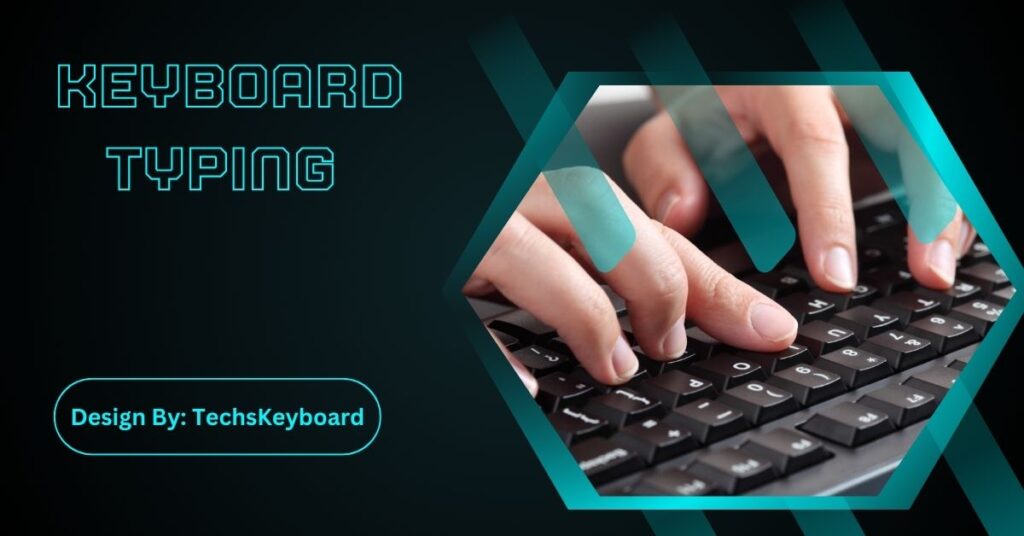Keyboard typing is a vital skill enabling communication, creativity, and productivity. From its historical evolution to modern ergonomic designs, typing integrates seamlessly with technology while shaping how we connect and work.
Whether it’s composing a heartfelt email, drafting a business proposal, or simply chatting with friends online, keyboard typing has a unique magic—it transforms abstract thoughts into tangible words that connect, inform, and inspire.
It’s a skill so intertwined with the digital heartbeat of our modern world that its importance cannot be overstated. But how did we get here? How has this seemingly simple skill and the technology behind it evolved, and where is it heading in the future? Let’s explore.
The Journey of Typing Technology:
The story of typing begins long before the keyboards we know today. Imagine the rhythmic clacking of typewriter keys, mechanical levers dancing with precision to imprint letters on a blank page. These iconic machines were the birthplace of typing as we know it.
Yet, the quest for efficiency led us away from the heavy and intricate machinery of typewriters to membrane keyboards in the 1980s. These quieter, lighter keyboards became popular due to their affordability and simplicity. But the story doesn’t end there—modern technology brought us back full circle with the rise of advanced mechanical keyboards, offering that distinct tactile feedback that typists crave.
What’s fascinating is how this evolution mirrors our search not just for utility, but for an experience. Today’s mechanical keyboards, complete with customizable switches and RGB lighting, are as much about productivity as they are about expression and comfort.
The Science of Efficient Typing:

Typing isn’t just an action; it’s a finely tuned dance between human anatomy and technology. Ergonomics—the science of designing tools that fit our natural movements—plays a key role in making typing efficient and comfortable.
When you rest your fingertips on a keyboard, have you noticed how effortlessly some keys seem to fall under your fingers while others require a stretch? That’s no accident. Modern keyboards are designed with finger reach, wrist alignment, and typing speed in mind.
Ergonomic split keyboards, in particular, are gaining traction for their ability to reduce strain. They curve and separate, inviting hands to relax naturally instead of straining to hover above a cramped layout.
Your ergonomic adventure doesn’t stop at the keyboard. Chairs, desk height, and posture all contribute to a typing experience that feels like second nature, fostering both comfort and efficiency over the long hours we often spend typing.
Keyboard Layouts and Their Stories:
Picture this—you’re learning to type, and every letter has its place on a keyboard aligned with the iconic QWERTY layout. But did you know that QWERTY wasn’t designed with speed in mind? It emerged in the era of typewriters, created to reduce jams by strategically spacing out commonly used letter pairs.
However, as innovation took root, so did alternative layouts like DVORAK, designed to maximize typing efficiency, and COLEMAK, which sought to modernize without being disruptive. Today, ergonomic split keyboards offer their unique layouts, providing customized options for users seeking comfort and speed.
Each layout, whether tried-and-true or experimental, tells a story of adaptation—a testament to our desire to type better, faster, and more comfortably.
Also Read: How To Turn On Light On Laptop Keyboard – Explained Guide!
How to Improve Typing Speed and Accuracy?
Typing is a skill, and like any skill, practice makes perfect. To become a typing maestro, here are some tips to supercharge your typing game:
- Practice Touch Typing: Become one with the keyboard by memorizing key placements without looking down. Tools like Typing.com or Keybr can help.
- Focus on Form: Keep your wrists neutral, fingers curved lightly, and posture upright—your body will thank you.
- Slow Down to Speed Up: Mastering accuracy before speed ensures you won’t have to fix errors, ultimately saving time.
- Use Typing Tests: Platforms like 10fastfingers offer fun ways to measure and improve speed over time.
- Invest in a Comfortable Keyboard: Experiment with options like mechanical, ergonomic, or low-profile keyboards to find your perfect fit.
These small adjustments and habits gradually transform your typing experience into a seamless extension of thought.
The Future of Typing:

Next, imagine speaking into your device, seamlessly watching as voice-to-text technology transcribes your every word. AI advancements in voice recognition, like those from Dragon NaturallySpeaking or even your smartphone’s assistant, are offering an alternative to traditional typing.
But does this spell the end of the keyboard? Hardly. While voice technology is incredibly useful, keyboards provide a different kind of precision and control, especially in collaborative work or coding environments. They remain indispensable tools not just for communication, but for creativity and focus.
What’s exciting is how typing might integrate with voice commands and predictive text. Hybrid systems could allow us to dictate large texts and refine them with keyboard input—all while maintaining the essence of the typing experience we know and love.
The Enduring Relevance of Keyboard Typing:
Typing isn’t just about putting words on a screen; it’s about ideas coming to life. The keyboard becomes our conduit to boundless creativity, connection, and learning. Even as technology evolves, the tactile dance of fingertips on keys will remain an essential skill, anchoring us in the digital future.
Whether you’re a wordsmith refining your craft, a coder bringing ideas to life, or just someone composing a quick message, one thing’s clear—keyboard typing is here to stay, adapting and thriving alongside innovations.
FAQs:
1. What are the benefits of ergonomic keyboards for typing?
Ergonomic keyboards reduce wrist strain and improve comfort by aligning hand posture naturally, promoting better typing speed and accuracy while minimizing long-term strain-related issues.
2. Why was the QWERTY keyboard layout created?
The QWERTY layout was designed during the typewriter era to prevent mechanical jams by spacing out commonly used letter pairs, ensuring smoother typing.
3. How can I improve my typing accuracy?
Focus on touch typing, maintain proper form, and practice with tools like Typing.com or 10fastfingers to develop muscle memory and eliminate errors.
4. Will voice-to-text technology replace traditional typing?
While voice-to-text is advancing, keyboards remain indispensable for precision, coding, and multitasking, offering control that complements voice-based tools in hybrid systems.
5. What’s the future of typing technology?
Future typing may integrate predictive text, AI, and voice commands while retaining the tactile control of keyboards, enhancing productivity and personalization.
Conclusion:
Keyboard typing remains a cornerstone of modern communication, bridging thoughts and technology. From ergonomic advancements to the enduring QWERTY layout, it continues to evolve alongside innovations like voice-to-text and predictive text systems. Typing enhances creativity, collaboration, and learning, offering unmatched precision and adaptability. As technology advances, the tactile experience of typing will persist, ensuring its relevance as both a functional and expressive tool in our digital lives.
Related Post:
- Also Read: Fintie Keyboard User Guide – Detailed Guide!
- Also Read: Mac Keyboard Not Working – Try These Fixes!
- Also Read: My Keyboard Shortcut Is Occupied But Nothing Happens


